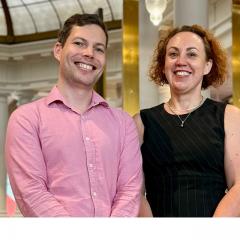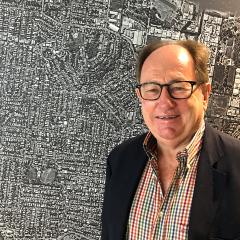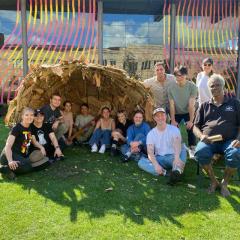Acclaimed author David Malouf discussed “all things Queensland” with Professor Cameron Bruhn to celebrate the release of The New Queensland House at Brisbane’s The Calile Hotel on Saturday 24 September.
The New Queensland House was co-authored by Professor Cameron Bruhn, Dean and Head of School at UQ’s School of Architecture, and Katelin Butler, editorial director at Architecture Media, and published by Thames & Hudson. Malouf, who wrote the foreword for the book, enthralled an audience of 130 architects, designers, clients and collaborators, who learnt from his memories of childhood Brisbane homes, changing Queensland culture, and the influence of architecture on his writing.
“David’s words in the foreword beautifully capture both the context and the promise of the book,” Professor Bruhn said.
“The conversation allowed us to further explore some of the themes of David’s prodigious output, and to sit them adjacently with a conversation about contemporary architecture in Queensland.”

The talk began with Malouf’s childhood home, 12 Edmonstone Street, a timber-and-tin building that Malouf captured in his 1985 book of the same title, as well as in an earlier poem titled The Year of the Foxes, which describes the home as a “far-flung, nomadic tent in the suburbs.”
“As a writer, I am very interested in the place that people come from – and that means the house they grew up in, their first apprehension of space and how people find a life in space, and how those particular spaces determine the relationships between people, the customs of a family, the customs of a society,” Malouf said.
“One of the things I’m always concerned with first is what [a character’s] original impressions of the world might have been. So I found myself often writing about those aspects of our first experience … That certainly led me to think both of climate, topography and the spatial nature of domestic dwellings as interesting topics in themselves.”
While The Year of the Foxes explores themes of wartime and violence, it also investigates the idea of architectural permanence.
“When you live in a house, it’s your home, so you take it very seriously and it seems permanent. But there was something always very impermanent and makeshift about the idea of the Brisbane wooden house. And one of the reasons for that is because so often you went out as a child and what you saw was one of those houses being taken through the streets on the back of a truck, and now there can’t be many places in the word where you see that! … it made you think differently about the permanency of houses.”
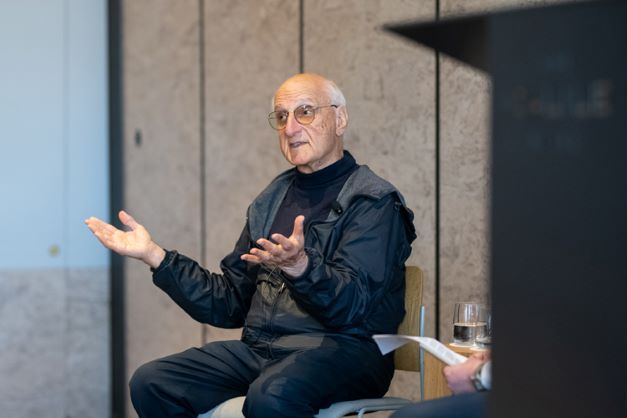
Malouf also spoke of how his father, an amateur architect, later designed a brick art deco house in Hamilton for the family to live in. The three-storey home was built into the side of a sloping hillside.
“I actually missed the old house so much that I kind of always, in a very unreasonable way, disliked the new house and kind of disapproved of it, even of it’s architecture I must say. But that was because all my strongest memories and associations, it seemed to me, had been taken away.”
Malouf gained a deepening appreciation for various architectural styles, and in the 1990s was involved in a campaign to save Greystaines in Hamilton. The now-heritage-listed, eight-bedroom home was previously a block of flats, designed by architect George Rae.
The Californian Missionary-style stucco building was under threat of being torn down and a new block of flats being built there, and Malouf joined his sister (who he said had owned the home next door – Blaire Lodge) in a campaign to save it.
“At that time in Queensland, only wooden or corrugated iron buildings had heritage protection, so a lot of us sort of worked to stop that happening,” he said.
“And at that point, people I think began to look at the Californian Missionary-style buildings which were built in Brisbane in the twenties and thirties and saw that they, too, were extraordinarily interesting and beautiful buildings and deserved some kind of protection.”
Photography by Georgia Wells
The New Queensland House presents twenty-eight awe-inspiring homes from the past decade, describing the architectural atmosphere in the early twenty-first century and exemplifying the ideas, teaching and buildings that have shaped the state's residential architecture.
The book also includes scene-setting essays by Brit Andresen and Michael Kenniger, and Silvia Micheli and Ashley Paine; a photo essay of Donovan Hill’s C House by David Chatfield; and an historical pictorial endnote section that references older homes that are significant to the story of Queensland’s residential architecture.
Co-author Katelin Butler said the book came about through a shared fascination with the “impressive trajectory” of Queensland residential architecture.
“The opportunities presented by the benign climate is clearly the point of difference … where porosity between indoor–outdoor living exists, both in a private sense, and in an active public engagement with the streetscape. Brisbane’s body of work offers a greater sense of openness and generosity than elsewhere in the eastern states.”
Butler said the book highlights “a new chapter in the story of architecture in Queensland” and celebrates the unparalleled comradery within this group of designers.
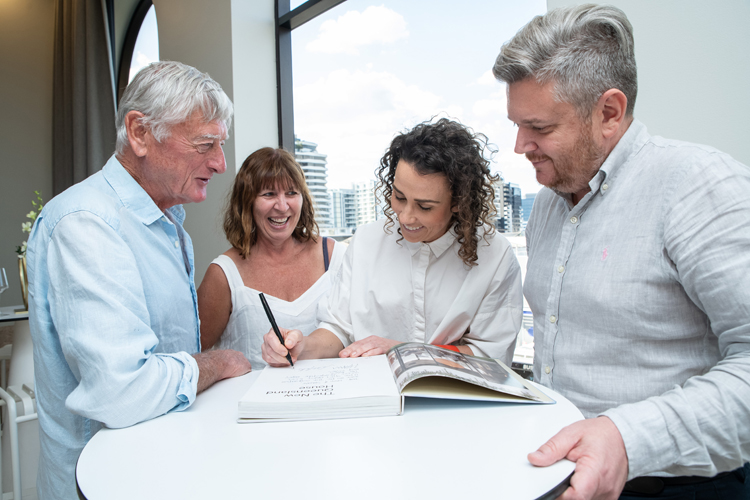
The full conversation between David Malouf and Cameron Bruhn is available to listen to here via the University of Queensland Library and photos from the event can be viewed here.
The book celebration was generously supported by The Calile Hotel, Studio Bland, and Thames and Hudson.
For more information about the book refer to the Thames and Hudson website.

